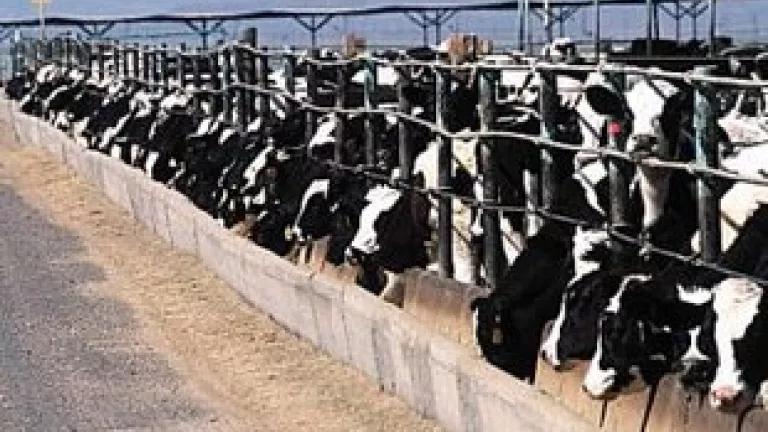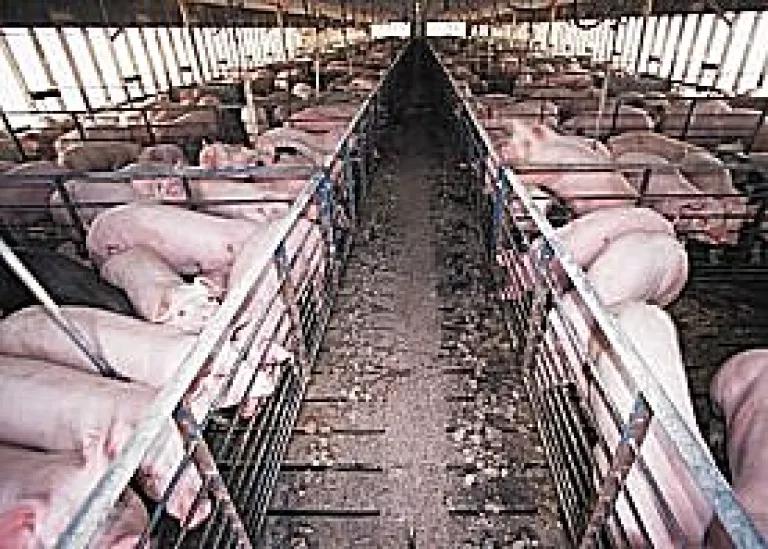
Back in March, a California dairy found itself in the news when state water quality inspectors discovered 50 manure-covered decomposing cow carcasses lying around the property, along with evidence of manure being handled in a variety of ways that could reach and contaminate waterways. Less dramatically, but still troublingly, the Environmental Protection Agency fined two Oregon dairies for discharging polluted water into tributaries to Tillamook Bay just a couple weeks ago.
Unfortunately, these are hardly isolated incidents. For instance, this year has seen several federal enforcement actions against industrial livestock facilities, from a chicken producer with “unauthorized discharges of chicken litter into a tributary of the Dugdemona River,” to a successful prosecution of a hog operation that polluted a stream that flows into North Carolina’s Waccamaw River.
These industrial livestock facilities, also known as concentrated animal feeding operations (or “CAFOs”), can generate as much waste – which is typically untreated – as a city. As a government analysis noted, “a median-sized beef cattle operation with 3,423 head of beef cattle can produce more than 40,000 tons of manure annually, which is more than the almost 38,900 tons of sanitary waste per year generated by the nearly 57,000 residents of Galveston, Texas.” And the waste they generate is nasty – manure contains bacteria, viruses and other pathogens, as well as organic compounds, heavy metals, antibiotics, pesticides, and hormones.
An industry like this – with facilities that generate enormous amounts of waste that can foul waterways and with chronic compliance problems -- obviously demands close oversight by pollution control officials. Sadly, this kind of scrutiny has not occurred across the industry as a whole. In fact, despite some targeted enforcement actions, EPA lacks pretty basic information about the industry; it doesn’t even have a definitive list of CAFOs in the United States. Without key information about the industry, the federal government’s watchdog, the Government Accountability Office, observed, “EPA does not have the information that it needs to effectively regulate these operations.”
That’s why NRDC and our partners were really pleased two years ago when EPA agreed to initiate an effort to get a handle on the industry’s true risks to water, by proposing to collect some basic operating information from CAFOs. This commitment was a first step towards fulfilling President Obama’s promise following his election to “strictly regulate pollution from large factory farms.”
I’m sorry to report that EPA recently abandoned this promising effort, announcing that it instead intends to “collect CAFO information using existing sources of information,” such as asking state agencies to share the information they might have about these facilities over the next 18 months.

EPA’s action is frankly inexplicable. My read of the agency’s decision is that EPA still believes that operating information from the nation’s livestock industry is essential to finally understanding these facilities’ environmental footprint and how to better control pollution from them. But rather than take a very simple approach – requiring CAFOs around the country to submit basic information to the agency by filling out an uncomplicated survey – EPA is instead embarking on a year and a half of spelunking through state files, which are certain to be incomplete, inconsistent, and out of date in many instances. I hope I am wrong, but I am confident that EPA’s chosen approach will involve more person-hours and more money spent, and will ultimately require significant further effort to get a complete database about the industry than EPA could get from meaningful national reporting requirements.
But don’t just take my word for it. There was a telling report last week in which the deputy environmental counsel over at the National Cattlemen’s Beef Association, Ashley McDonald, stated that the state-by-state approach is going to be more difficult and might also prevent the public from getting the information (something he highlighted as a good thing):
“It is unlikely that much of the proprietary information is available publicly for non-permitted authorities unless state laws require it,” he said. “So, the point is that at present the information is in a decentralized form that is much more difficult to ascertain, and the extent of the information depends on the state.”
McDonald said it will be more “labor intensive” for EPA to go through other channels instead of getting it directly from producers.
Because what EPA is planning to do is a horribly inefficient and likely inaccurate approach to a recognized problem, I can only guess that something other than good policy influenced EPA’s decision. I suspect it’s because EPA has been falsely vilified for the last several years as having an anti-agriculture agenda, and maybe the agency didn’t want to fight that battle again in this case. In recent years, we’ve seen allegations that EPA is using “drones” to spy on farms (it’s not), or regulate every drop of water on farms across America (it’s not), or control “farm dust” (it’s not), or regulate spilled milk like it’s oil (it’s not). Similarly, when EPA proposed to collect information directly from livestock operations, the industry raised vague but ominous-sounding concerns about security threats that would result from gathering the data (an argument we rebutted thoroughly).
This is a setback, no doubt. But EPA’s disappointing retreat does not diminish the need to get this information and begin the process of better controlling CAFO pollution, so NRDC and its partners will continue to push EPA. I hope you will also let the agency know what you think about its decision. The agency is reachable via numerous social media outlets, listed here.

